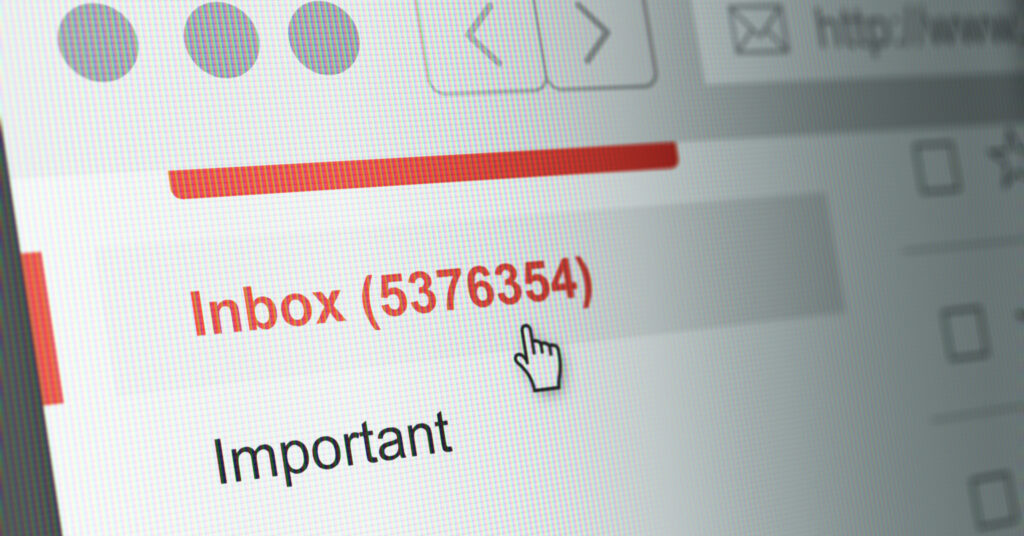Inbox Placement: How to Avoid the Dreaded Spam Folder


Inbox placement is increasingly important as you work to successfully reach subscribers’ inboxes. And with internet service providers using more advanced spam filtering technologies, it’s far too easy to take a misstep and end up in the junk folder.
Twenty percent of marketing emails never make it to inboxes. Until you dig deeper, that number might seem high … but not alarming.

Landing inbox placement is every email marketer’s dream. But it’s getting tougher.
For example, imagine that you send 10,000 emails annually and that 20% (or 2,000) don’t arrive in the intended recipients’ inboxes. Furthermore, assume that you have a 2% conversion rate. That adds up to 40 lost opportunities. And that only scratches the surface. What could have happened if you’d nurtured those 2,000 emails?
Inbox placement is increasingly important as you work to successfully reach subscribers’ inboxes. And with internet service providers using more advanced spam filtering technologies, it’s far too easy to take a misstep and end up in the junk folder.
Moreover, a low inbox placement rate can have lasting effects, with lower email open rates, fewer clicks, and fewer conversions. But what exactly is the inbox placement rate?
Understanding the inbox placement rate
The inbox placement rate describes how many of the emails you send actually reach an inbox. It doesn’t include emails that weren’t actually delivered, such as hard bounces. So it’s calculated based on the actual number of emails delivered, not on the total emails sent. Here’s a quick example:
You send 100 emails and seven of them are hard bounces, leaving you with 93 that actually get delivered. Let’s say that 10 of those 93 end up in the junk folder, so only 83 end up in the inbox. You divide 83 by 93 to get an inbox placement rate of 89%.
And this example rate is a little higher than the average, which is estimated at 80%, according to MarketingProfs.
Many get the inbox placement rate confused with the email delivery rate, which is different. And this might leave you asking: What does email delivery refer to?
The email delivery rate (also called “the inbox delivery rate”) is the percentage of your emails that are delivered to subscribers, which includes the spam folder. So, in this example, you would divide 93 (the total number of emails delivered after subtracting the hard bounces) by 100 (the total number of emails sent) to get a delivery rate of 93%.
As you can see, it makes far more sense to focus on inbox placement than to focus on inbox delivery because placement accounts for the number of emails that successfully land in the inbox.
But how do you keep your email messages out of the spam folder and increase that inbox placement rate? It all starts with email deliverability best practices.

Inbox placement is enough to make even the most seasoned marketer grin ear to ear.
Improve email deliverability: 3 best practices
ALLDATA was receiving excellent results from its email campaigns, but one day the company suddenly noticed an uptick in its bounce rate. After some investigation, the researchers learned that Yahoo had flagged some of ALLDATA’s email-sending practices as potentially malicious. Each ISP has its own rules about what will get a sender blocked, and oftentimes, these rules are a little cryptic.
The company partnered with Act-On’s deliverability team to determine what rules had been violated; then created a plan to repair its reputation. One of the strategies involved sending only to the most engaged users on its list while suppressing sends to inactive users (check out tip No. 3 below).
Of course, that is just one of the best practices that helped; here are a few more to consider around improving email deliverability:
1. First and foremost, be mobile-friendly.
Take a look around the coffee shop, the airport, or pretty much any other public space and you’ll notice something fast. People are tethered to their mobile devices. Head down, scrolling, scanning, and opening emails. In fact, eighty-one percent of all emails are opened and read on mobile devices. Improving deliverability starts with putting mobile-friendly experiences front and center.
The challenge for marketers is that AI and machine learning are watching and tracking how users treat your emails. Do they send you to the trash or, worse, mark you as spam? ISPs are continually evolving how they define spam, so what worked before may not work in the future..
A simple way to ensure that your emails are mobile-friendly is by using marketing automation. For example, Act-On has a variety of responsive email templates, allowing you to leverage mobile-friendly templates and create better user experiences.
2. Optimize for the inbox.
The design of your email content also plays a role in deliverability. ISPs can scan emails to ensure they fit specific criteria before granting access to the inbox. You can improve inbox deliverability by focusing on design and content elements, such as using clear and visible CTAs, alt-text for images, and content that resonates with your target audience. A few more tips:
- Create a clear subject line. Ensure that your subject line is clear and concise and entices readers to open your email.
- Design a compelling call to action, enticing readers to click. Use A/B testing to determine which subject lines work best. And if you aren’t sure where to start, marketing automation tools can help.
- Triple-check your links. Ensure that you don’t accidentally include broken or inaccurate links.
- Include alt text with email photos. Alt text acts as an image caption, helping ISPs and readers understand the content of your images.
Focus on the above to increase the odds that your marketing emails don’t end up in the dreaded junk folder. And, of course, keep close tabs on your numbers, including by conducting email deliverability checks and email deliverability tests, which are basically tracking your inbox placement rate.
3. Maintain good data hygiene.
You’ve probably heard about data hygiene; heck, you might even practice it. But we can’t emphasize enough how important it is to inbox placement.
Keep your email list squeaky clean. Ensure the people on your list opted in to receive communications and that you’re collecting valid email addresses. For example, at Act-On, we do this by creating landing page lead-generation assets, such as guides or eBooks, and allow users to easily access the desired information while consenting to receive emails.
Additionally, our platform integrates with NeverBounce so that you can easily review lists, ensuring that emails are valid, to proactively reduce hard bounces. You can also improve data hygiene by:
- Deleting inactive subscribers from your list periodically (aim for every six months).
- Segmenting subscribers so they receive more relevant information.
- Using email personalization to keep your list engaged.
- Proactively working to improve your subject lines.
- Requiring a business email address for email sign-ups.
And remember, declining open rates and lower click-through rates are usually signs that you’ve built up a disengaged audience. Take this as an indication that it’s time to clean and scrub your email list.
 Don’t underestimate the importance of high quality content for inbox placement: above all, delight your subscribers!
Don’t underestimate the importance of high quality content for inbox placement: above all, delight your subscribers!
Inbox placement is only getting more important
As technology advances, earning a spot in the inbox will only get harder. But the good news for marketers is that technology can help. You can use tools such as marketing automation to personalize emails at scale, more effectively segment audiences, and leverage new tools such as Act-On AI Create to quickly generate engaging subject lines.
Creating emails that your subscribers want to open and putting deliverability best practices into play will help improve inbox placement and your email campaign results.
Want more like this?
Want more like this?
Insight delivered to your inbox
Keep up to date with our free email. Hand picked whitepapers and posts from our blog, as well as exclusive videos and webinar invitations keep our Users one step ahead.
By clicking 'SIGN UP', you agree to our Terms of Use and Privacy Policy


By clicking 'SIGN UP', you agree to our Terms of Use and Privacy Policy
Other content you may be interested in
Categories
Categories
Categories

Want more like this?


Want more like this?
Insight delivered to your inbox
Keep up to date with our free email. Hand picked whitepapers and posts from our blog, as well as exclusive videos and webinar invitations keep our Users one step ahead.
By clicking 'SIGN UP', you agree to our Terms of Use and Privacy Policy









